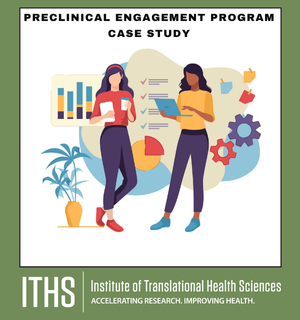Developing a Mouse Model to Mimic ALS Symptoms
Preclinical Engagement Program Case Study
 The Challenge
The Challenge
A pre-clinical investigator was developing a mouse model to better understand the pathophysiology of ALS motor dysfunction needed to validate the model against actual ALS symptoms in humans. Without having experience treating patients with ALS, the pre-clinical investigator needed a method to confirm how closely the mouse model mimics symptoms in humans.
Solution Offered – Community Engagement
The pre-clinical investigator interviewed patients with ALS and their caregivers to capture authentic experiences and symptoms of ALS on motor function. Patients and caregivers shared firsthand accounts of symptoms and challenges of ALS related to motor function. The pre-clinical investigator then described symptoms that occurred in the mouse model while the patients and caregivers identified discrepancies that existed between the mouse model and actual human disease progression.
Implementation & Results – Outcome
Incorporating feedback from patient and caregivers, the pre-clinical researcher refined the ALS mouse model using CRISPR/Cas9 technology for precise genetic modifications. The adjustments involved modifying the genetic expression in the mouse model to more accurately replicate the rapid progression of motor neuron degradation observed in patients. This enhancement ensured the research was more closely aligned with patient experiences, increasing its potential to impact ALS treatment positively.
Impact – Benefits of Community Engagement
Even though pre-clinical research may not involve direct human contact, community engagement still benefits this type of research. Community members understand the needs and culture of their communities and provide critical information about patient experiences, recruitment plans, and impacts of study procedures on participants. Development of animal models informed by patients’ lived experiences enables pre-clinical investigators to more closely mimic disease states and link their discoveries to human health.